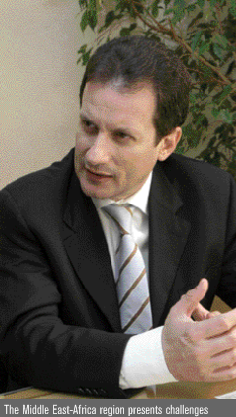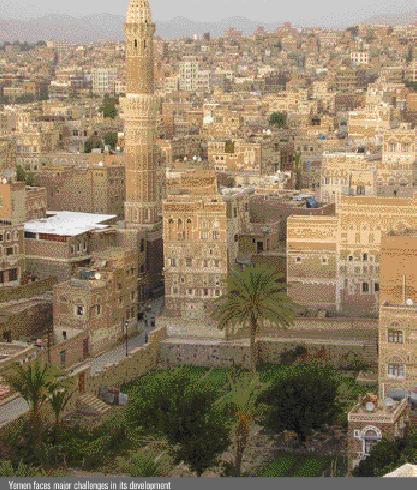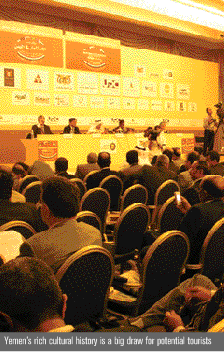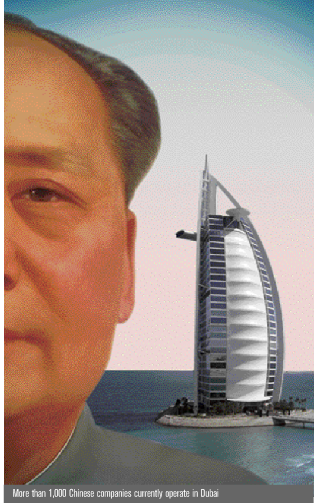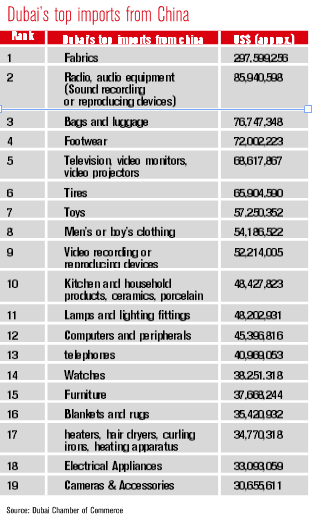Despite Lebanon’s shaky political and economic situation, millions of dollars have been invested in state-of-the-art warehouse facilities in Beirut in an attempt to re-establish the Lebanese capital as a regional trading and transport hub.
The focus has been the Beirut Free Trade Zone, established in 1995 and which offers business and financial incentives, including the possibility of 100% foreign ownership, customs exemptions for goods entering and leaving the free zone, long-term, low-cost land and building leases and low-cost utility rates for industries. By the end of May, the free zone’s Logistics Center will be officially opened which brings together a core of transport and warehousing companies.
Beirut port covers a total area of 1,200,000 m2, of which 11,200 m2 is reserved for the free trade zone. Currently, the port handles some 6 million tons of cargo a year, which represents some 55% of all import and some 60% of all export, while some 20% of in and outgoing trade is handled by the airport. In addition to Beirut port, Lebanon has free trade zones in Tripoli port and Selaata, although industry chiefs are calling for more free trade zones, especially at the airport and Masna’a at the Syrian border.”
The global logistics market is reckoned to be worth some $320 billion annually with an annual growth rate of 3% to 10%. The MENA region represents just 10% of the global market. Yet with an annual increase of 10%, it is arguably the fastest growing market in the world.
Net Logistics, part of Net Holding, which also owns the express delivery company Skynet, opened its $750,000 facility within the Logistics Center of the Beirut port free trade zone and offers all services related to freight forwarding and supply chain management. In 2005, it had an annual turnover in Lebanon of some $6 million, which it hopes to increase by 50% in the coming year.
“Seeing the political situation, many people asked if we were crazy or just stupid to invest such a large amount of money in Lebanon,” said Mourad Aoun, CEO of Net Logistics. “But we strongly believe that, despite the political situation, the private sector can operate, and be of value in giving Lebanon its rightful place within the global economy.”
According to him, the ultimate aim of the Logistics Free Zone and Net Logistics’ investment is to reestablish Beirut as a regional trade and distribution hub and as such to reclaim its historic position. “Lebanon has always been a natural crossing point for trade between east and west,” he said. “Before the Lebanese civil war some 90% of trade was destined for Iraq.”
As Dubai is currently the main trading hub within the Persian Gulf for goods coming from the Far East, Beirut is perfectly located as the gateway between Europe and the Levant, in which Iraq is the most important market. By truck, it only takes two days to reach Iraq.
Currently, most trade from Europe to Iraq goes via Aqaba, which not only takes longer to reach, but is also heavily congested. Haifa is also trying to claim a piece of the trading pie, yet many traders prefer not to go through Israel, because of (obvious) political implications.
“As Iraq has the largest population it is our most important market,” said Aoun, “yet we operate, and are based in, all over the Levant, whereby one should realize that trade is a two-way traffic affair. Ideally, trucks deliver imported goods to say Damascus and Amman, and pick up goods destined for export, via Beirut.”
Modern day transport companies offer more than just transport. So, a clothes company may deliver a container of goods destined for three countries in the region, in which case the total logistics provider takes care of unpacking and repacking before re-exporting the goods. A computer firm may send several containers with computer parts, often coming from different parts of the world, the logistics firm will take care of assembling.
“If the political situation changes in Lebanon, we are to see a lot of changes,” said Asma Abboud, who is head of Lebanon’s Land Transport Committee, part of the Forwarders Syndicate. “Don’t forget that transport is arguably the most transparent and most fully prepared file regarding Lebanon’s bid for WTO membership.”
Can Free Trade Zones
make Beirut again
a player in region?
Part of a battle between the Levant and Gulf
for a greater share of the global shipping market
BEIRUT: Lebanon opened two free zones in Beirut and Tripoli in 2001 in an effort the recapture its role as a regional trading hub, joining an intensifying regional race between GCC and Levant countries to attract foreign corporations to set up shop in their respective tax-free havens.
Between Lebanon, Jordan, and Egypt there are at least 20 operational free zones and almost 30 in the UAE alone. With the proliferation of bilateral trade agreements between various Middle Eastern countries and the EU or the US, the number of free zones in the Arab world is sure to increase in the future.
Lebanon’s success luring global corporations has so far been muted, but the Beirut Port Authority hopes that will change with the launch of the logistics free zone in April.
Net Logistics, a Lebanese owned subsidiary of global shipping company Eagle, opened the first warehouse in the zone on April 11, and expects to channel 80 percent of its cargo through the Beirut Port. Global shipping firm CMA-CGM also announced plans last month to build permanent facilities accommodating 400 employees, as did Aramex.
All space in the logistics free zone is now occupied or booked by global firms, said head of the Beirut Port Authority, Hassan Qorteim.
“We looked at all other free zones in the world that had logistics areas, and tried to pin down why logistics companies did not come to Lebanon,” Qorteim said.
The high cost of shipping from Lebanon was one of the biggest obstacles for the free-zone to flourish, so the Port Authority built container terminals to allow companies to store cargo at the port.
“The creation of container terminals decreased the costs of shipping through Lebanon, and increased the number of shipping destinations accessed to and from Beirut,” Qorteim said.

But there were also regulatory barriers to logistics firms operating from the Beirut Free Zone, namely a rule that goods could only be transported in and out of the free zone by their owner.
Qorteim said the rule has been “modified” in the logistics zone to allow companies to import and export other peoples’ property from Lebanon, and expects many of the zone’s occupants to use Beirut as the hub of Levant operations in the future.
Meanwhile Public Works and Transport Minister Mohammad Safadi announced plans in April to expand wharfs and free-zones at the Tripoli and Beirut ports in the “near future.” Though more companies are eyeing alternative free-zones given sky-rocketing inflation and the rising cost of doing business in Dubai, the government must do more to promote the country as regional trading hub if Lebanon is to shrug off the legacy of last summer’s sea blockade.
Qorteim said the government has yet to play any role in Lebanon’s free-zones.





